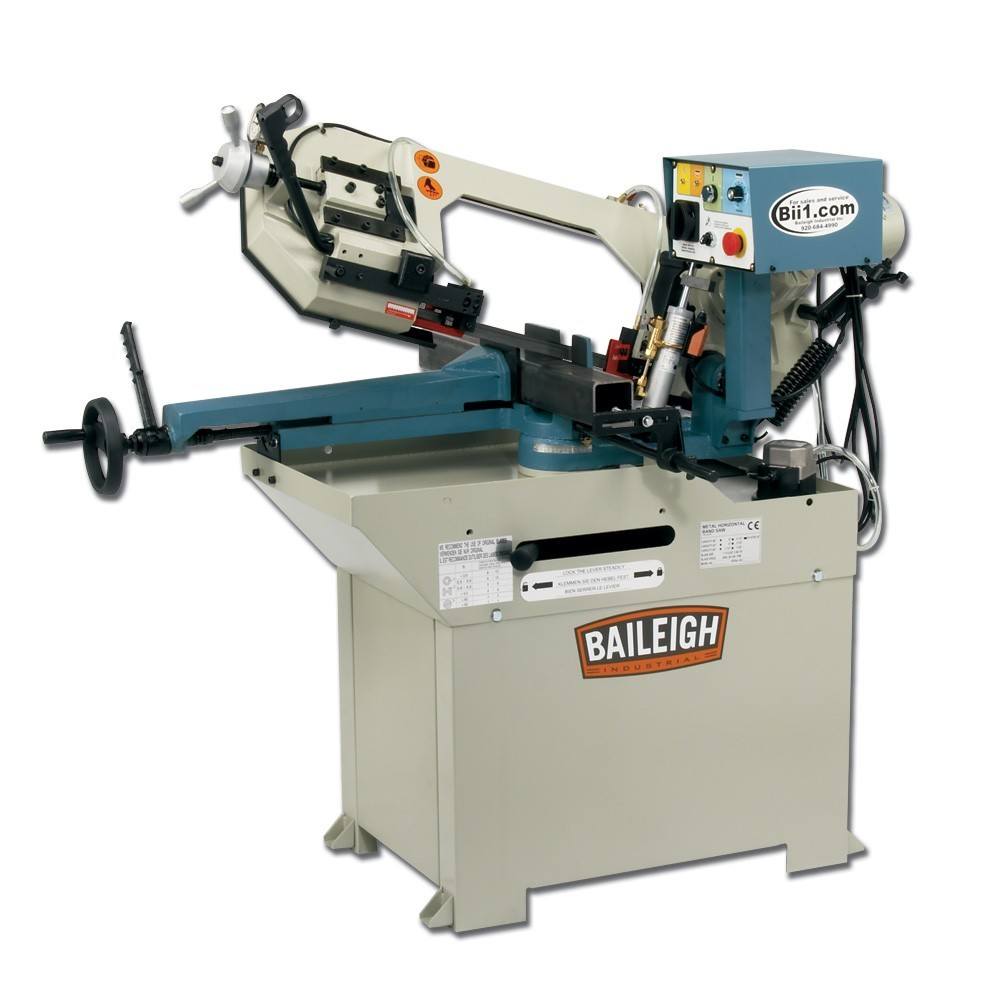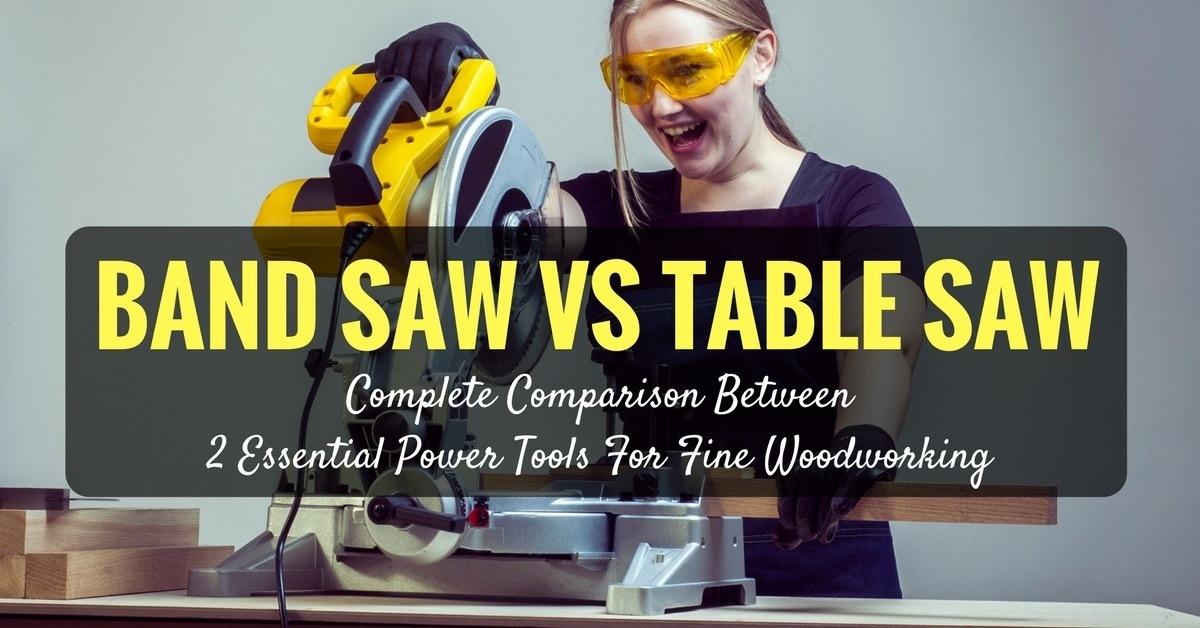There is a bizarre addiction for power tools, quite similar to that of high speed on an open highway.
Working with a hand held jigsaw or circular saw can gratify your basic requirements; however, sometimes you have to do a little more, go a little further and get things done faster that too with perfect efficiency.
You start yearning for more power and more energy. Your body gravitates and gets attracted towards the band saws and table saws in the hardware stores and online tool shops, you start to drool over peculiarly and all of a sudden you realize that you need to have one.
Yet you keep wondering, which one? The feasibility, convenience, and accuracy of a band saw or table saw over a hand held jigsaw or circular saw makes power saws particularly engaging. Unfortunately, a band saw or table saw involves a big investment.
Most of us have to decide on whether to invest in one or the other until we can genuinely afford both of them – if we really need both. However, the point is we do need both.
More...
General overview: Band saw VS Table saw
Although a band saw is rarely the first stationary power tool purchased for a shop, it is one of the most versatile and efficient tools.
A band saw, better known as a more advanced version of scroll saw, cannot only be used for fun craft work or art work, but also for cutting decorative moldings and other furniture and cabinetry pieces. You can also use it for repairing them.
A band saw can be used to cut and scrap curves, even in lumbers which are thick such as in creating cabriole legs to rip lumber and to cross-cut short pieces. The most common use for the band ?saw, however, is in cutting and scraping irregular shapes.
The second most common utility is in re-sawing or ripping lumber into thin and beaten slabs. A band saw also makes the smoothest of cuts and with the blade which is sufficiently appropriate, can be used to cut materials or beaten metals except for wood.
Band saws are basically a pair of wheels, or sometimes three wheels, holding a thin rotating blade, a table to form a support for the work and a motor in order to run it. I built my first band saw many years ago using a kit from the Gilliam Mfg. Company.
The company supplied the wheels and other equipment; I got hold of a motor and constructed a wooden cabinet. Band saws are available in a variety of sizes and shapes, ranging from small bench-top to huge floor models.
Bench-top saws are known for their portability and can be placed on a work bench or bolted to a stand for a supportive framework. These generally do not have the capacity, or the potential of re-sawing of floor models, but are much more cost effective.
Bench top models are also handy if you are confined to the space of the shop. The size of these saws determines the stock size it will handle and the size is based on primarily two dimensions- First is the distance between the blade’s inner edge and the saw’s throat.
A 14 inches band saw has a 14 inches measurement between the two. This measurement may range from 10 inches up to an extent of 4”. Some manufacturers may go by the wheel size which will make the due and accurate measurement smaller.
The second dimension is the depth of the cut which is the distance between the table and the underside of the blade guide or guard. On a saw with a 6" depth of cut, you can actually cut about 5’ to 8" owing to the clearance required for the guide to make sure that there is an easy and convenient movement of the work.
A table saw, on the other hand, is used for cutting wood with a circular blade whose teeth are movable in the direction of the operator, at over one hundred miles per hour. These create few hazards, such as:
- They have the ability to cut or severing hands and fingers.
- They have the potential of lifting up and throwing work pieces back at the operator at moderately high speed.
- They have the disadvantage of propelling saw dust, splinters, and chunks of wood particles.
- They can even propel and harm the eyes of the operator with broken teeth of a saw blade.

On a regular basis, we are retained to investigate injuries and wounds which involve the use of table saws.
The illustration right below this write up represents a contractor style saw, which would commonly be found in the workshop of wood working hobbyists as well as on specific location at construction sites.
The contractor style table saw is designed to be relatively smaller, lighter, and more mobile than those of cabinet or hybrid table saws.
Common manufacturers which associate with this style of saw include Delta, Dewalt, Bosch, Makita, Ryobi, Craftsman, Rockwell, Porter Cable, Saw Stop etc.
What do they do and
which one should you get?
To understand band saw vs table saw- which one is better, the most fundamental and basic difference between a band saw and a table saw should be explained. It can be explained as follows
If you look at what the table saw provides, you will find that it is clearly meant for the drag strip – it cuts straight and fast with high efficiency. The band saw, on the other hand, is clearly made for the speedway – ready to handle and scrap curves.
Table saws are about consistency in both speed and power, full speed ahead. Band saws enable you to turn and adjust. The table saw has a more of an integrated approach where the tool does more work and results in maximum output than the individual working with it.

table saw
If you are an established and competent or knowledgeable professional contractor, woodworker or metalworker, the choice is easier because your answer is primarily related to the production.
But what confusion you might have in case you are a beginning woodworker? In that case, you have to educate yourself and not get carried away by the misguidance of other people on which saw you must opt for.
Clearly, it depends on the kind of work you are willing to do and which saw you choose in order to serve that very purpose.?

Band Saw via Baileigh
The above picture is of an advanced band saw. A band saw has around a 1/2” to 1/4” blade and just because the blade on a band saw moves down instead of towards you, you are far less likely to get kickback unless you are sawing an unsecured round object.
If you are a clumsy person, the band saw may be your preferred choice and you can continue to use your circular saw for cross-cuts.
The Consumer Product Safety Commission reported a few years back that about 70% of the stationary saw related injuries are from table saws and about 7% from band saws.?
Which one should you buy?
How difficult it is to say something like” which one should you buy” when both serve different purposes and that too with sheer efficiency. However, after having taken a close look at their uses, summarized pros and cons, we can recommend you to opt for band saws in terms of longevity and safety.
However, taking the efficiency and perfection in work under consideration, hands down to table saws!If you prefer the safety of a band saw, but you have to cut 100 dadoes a day, your band saw will not offer what you need.
A table saw makes producing a quantity of dadoes swifter. You can put a dado stack blade on a table saw, but not a band saw. However, if you have a router, you can use that to make dadoes.

Carpenter in wood workshop using table saw. Mature man i casual clothing. Space is full of working tools and wooden planks.
The question of “must I get a band saw or a table saw” is also answered by taking a look at what other tools are available at your place. You can balance the price gap between a band saw and table saw by looking at what other power tools can suffice for the tasks you sacrifice.
Which tools you already have, which you would have to purchase and which ones would you have to use frequently to cover up for not having a band saw or table saw, have to be brought under consideration as well.
Even though a table saw and band saw? are both capable of making rip cuts, those rip cuts can never be of the same quality. A table saw makes a much cleaner, soothing cut than a band saw. If you decide to go with a band saw, expect to spend time cleaning up the edges.
Bottom line
Picture yourself as a dreamer who has completed his projects and can’t stop admiring it. It is time to pick up a power tool now, which one do you opt for? Consider your preferences, availability of tools and purpose and go for either a band saw or table saw.
